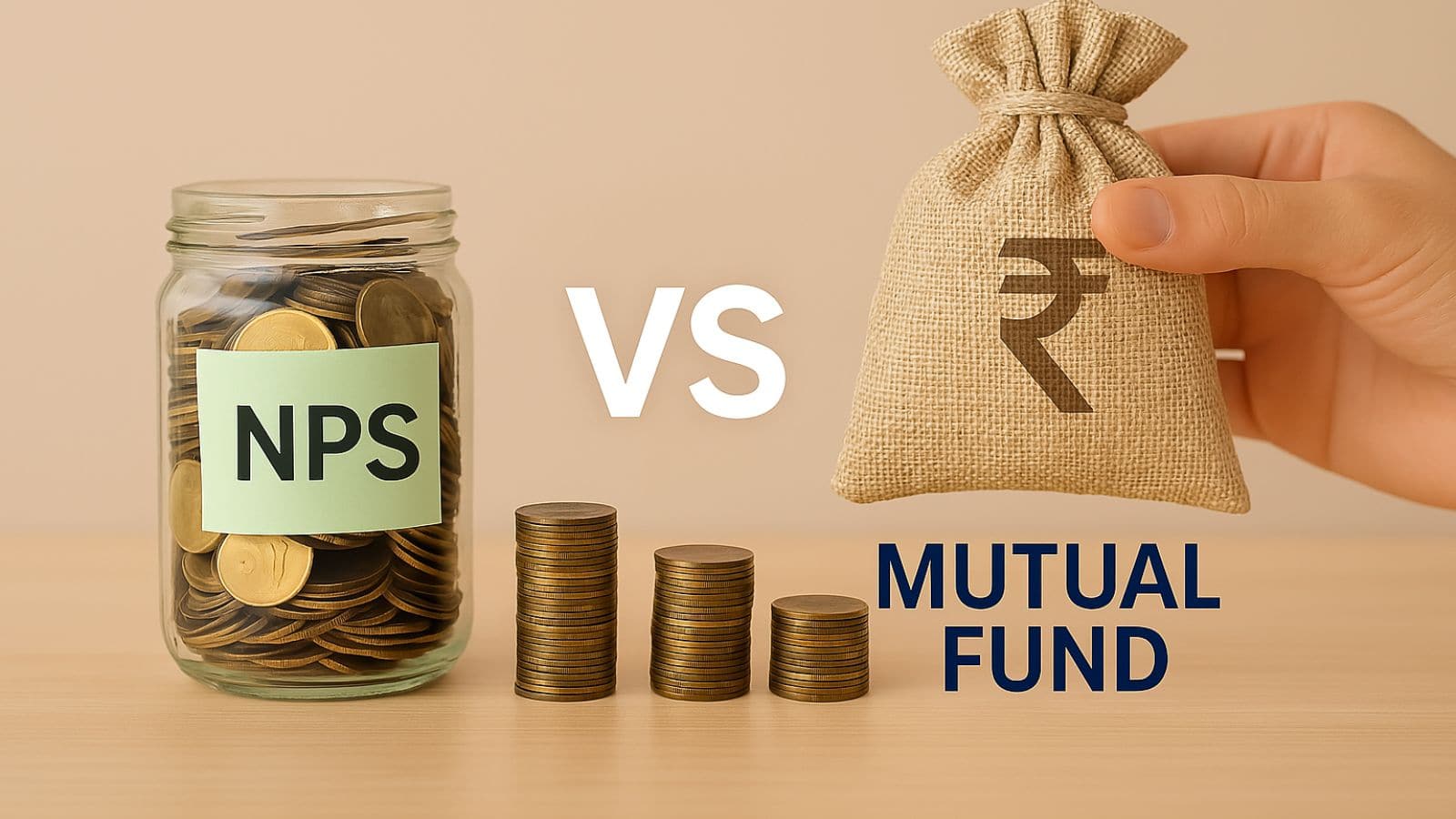TheFinQ.com is designed to be your one-stop destination for everything related to cards, loans, and investment products across India. We help you compare and choose the best financial products that suit your needs, including:

When planning for long-term wealth creation, two popular options dominate Indian investors’ minds – the National Pension System (NPS) and Mutual Funds. Both offer distinct advantages, but which one suits your financial goals better?
This in-depth comparison will help you decide where to invest based on returns, risks, liquidity, tax benefits, and long-term growth.
The National Pension System (NPS) is a long-term retirement-focused investment scheme regulated by PFRDA (Pension Fund Regulatory and Development Authority).
✔ Tax Benefits: Up to ₹2 lakh under Sec 80C, 80CCD(1B)
✔ Low-Cost Investing: Fund management charges (~0.01%)
✔ Fixed Asset Allocation: Equity (max 75%), Debt, and Govt. Bonds
✔ Annuity Compulsion: At least 40% corpus must be used to buy a pension plan at maturity
✔ Lock-in Till Retirement: Partial withdrawals allowed after 10 years
Best For: Risk-averse investors seeking a disciplined, tax-efficient retirement plan.
Mutual funds pool money from multiple investors to invest in stocks, bonds, gold, or other assets based on the fund’s objective.
✔ Diverse Options: Equity, debt, hybrid, ELSS, SIP/Lumpsum
✔ Higher Return Potential: Equity funds historically give 10-12% CAGR
✔ Liquidity: Open-ended funds allow anytime redemption (except ELSS)
✔ No Annuity Compulsion: Full withdrawal at maturity
✔ Taxation: LTCG on equity (10% above ₹1L), STCG (15%)
Best For: Investors seeking wealth creation with flexibility and market-linked returns.
| Factor | NPS | Mutual Funds |
| Returns | 8-10% (balanced) | 10-14% (equity funds) |
| Liquidity | Lock-in till 60, partial exit after 10 yrs | No lock-in (except ELSS) |
| Tax Benefits | ₹2L (80C + 80CCD) | ₹1.5L (ELSS under 80C) |
| Risk | Moderate (fixed allocation) | High (market-linked) |
| Withdrawal Rules | 60% tax-free, 40% annuity | Fully redeemable (tax applies) |
| Expense Ratio | 0.01-0.1% (lowest in India) | 0.5-2.5% (higher for active funds) |
Verdict: NPS offers better tax efficiency, but mutual funds provide more liquidity post-retirement.
🚫 Strict Lock-in: Withdrawals only after age 60 (or extreme cases)
🔄 Partial Withdrawal: Allowed after 10 years (specific conditions)
💳 No Lock-in (Except ELSS): Redeem anytime (exit load may apply)
💰 Systematic Withdrawal Plan (SWP): Regular income possible
Winner: Mutual funds for emergency fund needs.
✔ Want a low-cost, disciplined retirement plan
✔ Need extra tax savings beyond 80C
✔ Can tolerate moderate returns for safety
✔ Seek higher returns (10%+ CAGR)
✔ Prefer liquidity & flexibility
✔ Are okay with market risks
While NPS ensures a tax-efficient retirement, mutual funds offer better growth potential. Your choice depends on:
🔹 Risk Appetite (Safe vs Aggressive)
🔹 Liquidity Needs (Lock-in vs Flexible)
🔹 Tax Planning (NPS vs ELSS)
Pro Tip: Diversify! Allocate to NPS for retirement and equity mutual funds for long-term wealth.